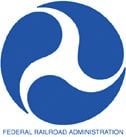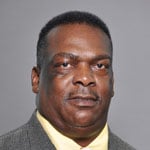
A federal district court in Phoenix listened carefully — and agreed — as organized labor challenged a new state law aimed squarely at diluting the political power of labor unions in Arizona.
An anti-union Arizona legislative majority decreed that some labor unions – but not the ones with which they curry favor; and certainly not employers – should be restricted in making contributions to political candidates or causes.
A First Amendment violation was made clear to the federal court – that the law’s intent was arbitrarily to restrict the free speech of targeted labor unions – and the state was ordered by the court not to enforce the law on its effective date of Oct. 1. The court now will now consider imposing a permanent injunction.
In the fashion of the novel “1984” by George Orwell, which probed mass mind control, the law’s authors spitefully misnamed it, “Protect Arizona Employees’ Paychecks from Politics Act.”
The law is intended to restrict targeted labor unions – presumably those unions that support political opponents and policies of the legislative majority – from using paycheck deductions of its members to fund political activities or causes.
The law does not impose similar restrictions on unions representing police officers, or on employers who make political contributions. As such, the federal district court said the law violates the free speech rights of the targeted unions.
The court held that the law “violates the First Amendment” by discriminating against ‘those wishing to express less favored or more controversial views”; and “by imposing its burdens on the political speech of some unions and other organizations and not imposing like costs upon other similarly-situated unions, or on other organizations that can use the funds for political activity, the law is under-inclusive and discriminates according to speaker.”
Hynes said the law, put on hold by the court, is “part of a comprehensive legislative campaign to quash speech in Arizona by labor organizations and groups representing employees.” One news organization quoted a sponsor of the law as saying it is intended to prevent unions “from taking their First Amendment rights too far and infringing on the rights of employers.”
Specifically, the law requires unions collecting dues money through payroll deduction either to “affirm to the employers who process the deductions that none of their general fund is used for political purposes or to specify the percentage of their general fund to be used for political purposes.” The term “political purposes” is defined by the law as “supporting or opposing any candidate for public office, political party, referendum, initiative, political issue, advocacy, political action committee, or other similar group.”





